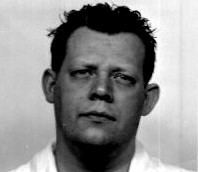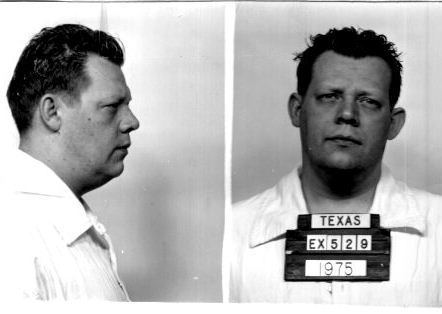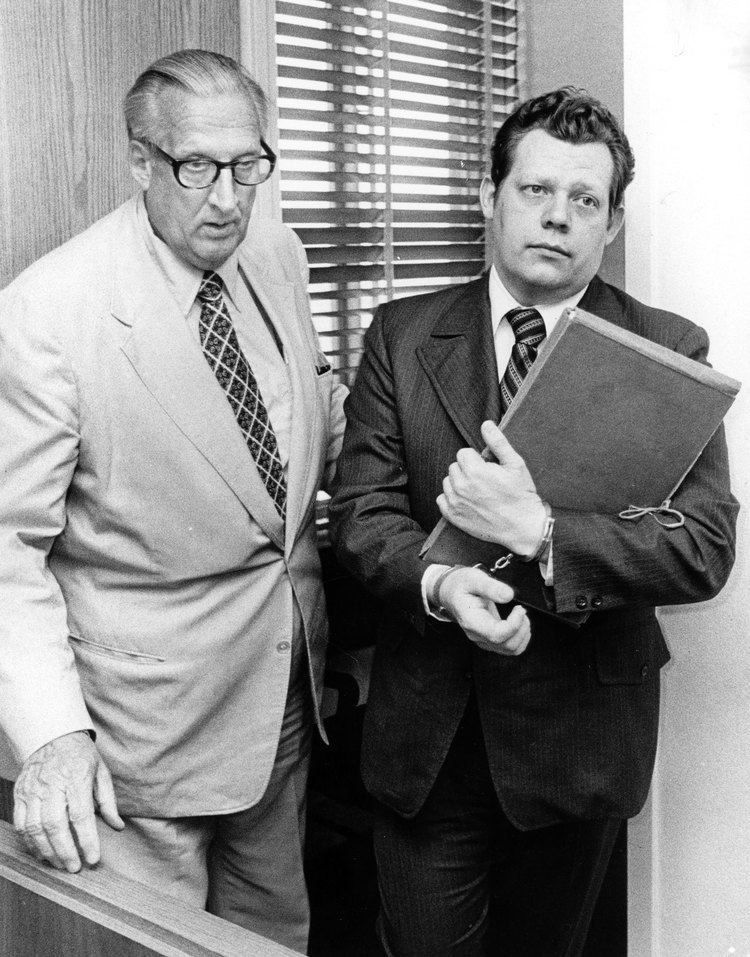Cause of death Lethal injection Children Elizabeth O'Bryan | Nationality American Criminal penalty Capital punishment | |
 | ||
Born October 19, 1944 ( 1944-10-19 ) Resting place Forest Park East Cemetery Other names The Candy ManThe Man Who Killed Halloween Spouse Daynene O'Bryan (m. ?–1975) Similar José Medellín, Shannon Charles Thomas, Hank Skinner, Humberto Leal Garcia, Cameron Todd Willingham | ||
Ronald clark o bryan last statement
Ronald Clark O'Bryan (October 19, 1944 – March 31, 1984), nicknamed The Candy Man and The Man Who Killed Halloween, was an American convicted of killing his eight-year-old son Timothy on Halloween 1974 with potassium cyanide-laced Pixy Stix in order to claim life insurance money to ease his own financial troubles, being over $100,000 in debt at the time. He also distributed poisoned candy to his daughter and three other children in an attempt to cover up his crime; however neither his daughter nor the other children ate the poisoned candy.
Contents
- Ronald clark o bryan last statement
- Background
- Death of Timothy OBryan
- Trial and conviction
- Death
- References

Background

O'Bryan lived with his wife Daynene in Deer Park, Texas with their two children, son Timothy (born in 1966 – died on October 31, 1974) and daughter Elizabeth (born in 1969). O'Bryan worked as an optician at Texas State Optical in Sharpstown, Houston. He was the deacon at the Second Baptist Church where he also sang in the choir and was in charge of the local bus program.
Death of Timothy O'Bryan

On October 31, 1974, O'Bryan and a neighbor took their four children trick or treating in a Pasadena, Texas neighborhood. After visiting a home where the occupant failed to answer the door, the children grew impatient and ran ahead to the next home while O'Bryan stayed behind. He eventually caught up with the group and produced five 21-inch Pixy Stix. At the end of the evening, O'Bryan gave two of the Stix to his neighbor's two children and one each to Timothy and Elizabeth. Upon returning home, O'Bryan gave the fifth piece of candy to a 10-year-old boy whom he recognized from his church. Before bed, Timothy O'Bryan asked to eat some of the candy he collected, choosing the Pixy Stix. Timothy was unable get the powdered candy out of the straw so O'Bryan helped him loosen the powder. After tasting the candy, Timothy complained that it tasted bitter, so O'Bryan gave him some Kool-Aid to wash away the taste. Timothy immediately began to complain that his stomach hurt and ran to the bathroom where he began vomiting and convulsing. O'Bryan later claimed he held Timothy while he was vomiting and the child went limp in his arms. Timothy O'Bryan died en route to the hospital less than an hour after consuming the candy.

Timothy's death from poisoned Halloween candy prompted fear in the community. Numerous parents in Deer Park and the surrounding area returned candy their children acquired from trick or treating to police fearing it was laced with poison. Police did not initially suspect O'Bryan of any wrongdoing until Timothy's autopsy revealed that the Pixy Stix he consumed was laced with a fatal dose of potassium cyanide. The five Pixy Stix O'Bryan claimed to receive were recovered by authorities from the other children, none of whom had consumed the candy. All five of the Pixy Stix had been opened with the top two inches refilled with cyanide powder and were resealed with a staple. According to a pathologist who tested the Pixy Stix, the candy consumed by Timothy contained enough cyanide to kill two adults while the other four candies contained dosages that could kill three to four adults.

O'Bryan initially told police that he could not remember which house he got the Pixy Stix from. Police became suspicious of his excuses because O'Bryan and his neighbor had only taken their children to homes on two streets because it had been raining. Their suspicions increased after learning that none of the homes the group had visited had handed out Pixy Stix. After walking the neighborhood with police three times, O'Bryan led them to the home that the group visited but whose occupant did not answer the door. O'Bryan claimed that he revisited the home before catching up with the group. He said the owner of the home did not turn the lights on but cracked the door and handed him five Pixy Stix. He claimed to have only seen the man's arm, which he described as "hairy." The home was owned by a man named Courtney Melvin. Melvin was an air traffic controller at Hobby Airport and did not get home from work until 11 p.m. on Halloween night. Police ruled Melvin out as a suspect when nearly 200 people confirmed that Melvin was in fact at work.

As their investigation furthered, police learned that Ronald O'Bryan was over $100,000 in debt. In the ten years preceding the crime, O'Bryan held 21 jobs. At the time of his arrest, he was suspected of theft at his job at Texas State Optical and was close to being fired. His car was about to be repossessed, had defaulted on several bank loans and had already lost his house. Police discovered that O'Bryan had taken out life insurance policies on his children in the months preceding Timothy's death. In January 1974, he had taken out $10,000 life insurance policies on both of his children. One month before Timothy's death, O'Bryan took out additional $20,000 policies on both children, despite the objections of his life insurance agency. In the days preceding Timothy's death, O'Bryan had taken out yet another $20,000 policy on each child. The various policies totaled approximately $60,000. O'Bryan's wife maintained that she did not know about the insurance policies on her children's lives. Police also learned that on the morning after Timothy's death, O'Bryan had called his insurance company to inquire about collecting the policies he had taken out on his son. After learning that O'Bryan had visited a chemical supply store in Houston to buy cyanide shortly before Halloween 1974 (he left without purchasing anything after learning the smallest amount available to purchase was five pounds), police began to suspect that Ronald O'Bryan killed his son. Police theorized that O'Bryan had laced the candies with poison in an effort to kill his children to collect on their life insurance policies. They believed he gave the other children the candy in an effort to cover up his crime. The other children never consumed the candy. Police repeatedly questioned O'Bryan but he maintained his innocence.
Trial and conviction

Although the police never discovered when or where O'Bryan bought the poison, he was indicted for one count of capital murder and four counts of attempted murder. He was arrested on November 5, 1974 and entered a plea of not guilty to all five counts. O'Bryan's trial began in Houston on May 5, 1975. During the trial, a chemist who was acquainted with O'Bryan testified that in the summer of 1973, O'Bryan contacted him asking about cyanide and how much would be fatal. A chemical supply salesman also testified that O'Bryan had asked him how to purchase cyanide. Friends and co-workers testified that in the months before Timothy's death, O'Bryan showed an "unusual interest" in cyanide and spoke about how much it would take to kill a person. O'Bryan's sister-in-law and brother-in-law testified that on the day of Timothy's funeral, he spoke of using the money from Timothy's insurance policy to take a long vacation and buy other items. O'Bryan continued to maintain his innocence. His defense mainly drew upon the decades-old urban legend concerning a "mad poisoner" who hands out Halloween candy laced with poison or needles or candy apples with razor blades inserted. While this legend is often cited as being true and other cases have been falsely linked to it, there are virtually no documented cases of any such event. The case and subsequent trial garnered national attention and the press dubbed O'Bryan "The Candyman".
On June 3, 1975, a jury took 46 minutes to find O'Bryan guilty of capital murder and four counts of attempted murder. The jury took 71 minutes to sentence him to death. Shortly after he was convicted, his wife filed for divorce. She later remarried and her new husband adopted her daughter Elizabeth.
Death
Ronald O'Bryan was confined to the Huntsville Unit in Huntsville, Texas. According to Reverend Carroll Pickett, a former chaplain who worked for the Texas Department of Criminal Justice, O'Bryan was shunned and despised by his fellow Death Row inmates for killing a child and was "absolutely friendless". The inmates reportedly petitioned to hold an organized demonstration on O'Bryan's execution date to express their hatred of him.
O'Bryan's first execution date was set for August 8, 1980. His attorney successfully petitioned for a stay of execution. A second date was scheduled for May 25, 1982. That date was also postponed. Judge Michael McSpadden scheduled a third execution date for October 31, 1982, the eighth anniversary of the crime, and he offered to personally drive O'Bryan to the death chamber. It was to have been the first time Texas executed an inmate by lethal injection. The Supreme Court delayed the date yet again to give O'Bryan a chance to pursue an appeal to seek a new trial. A fourth date was scheduled for March 31, 1984. O'Bryan's lawyer sought a fourth stay on the basis that lethal injection was a "cruel and unusual punishment". On March 28, a federal judge rejected the request. On March 31, 1984, shortly after midnight, O'Bryan was executed by lethal injection at the Huntsville Unit. In his final statement, O'Bryan maintained his innocence stating that he felt the death penalty was "wrong". He added, "...I forgive all – and I do mean all – those who have been involved in my death. God bless you all and may God's best blessings be always yours." During the execution, a crowd of 300 demonstrators gathered outside the prison cheered while some yelled "Trick or treat!". Others showered anti-death penalty demonstrators with candy.
Ronald O'Bryan is buried in Forest Park East Cemetery in Webster, Texas. Timothy is buried in Forest Park Lawndale Cemetery in Houston.
